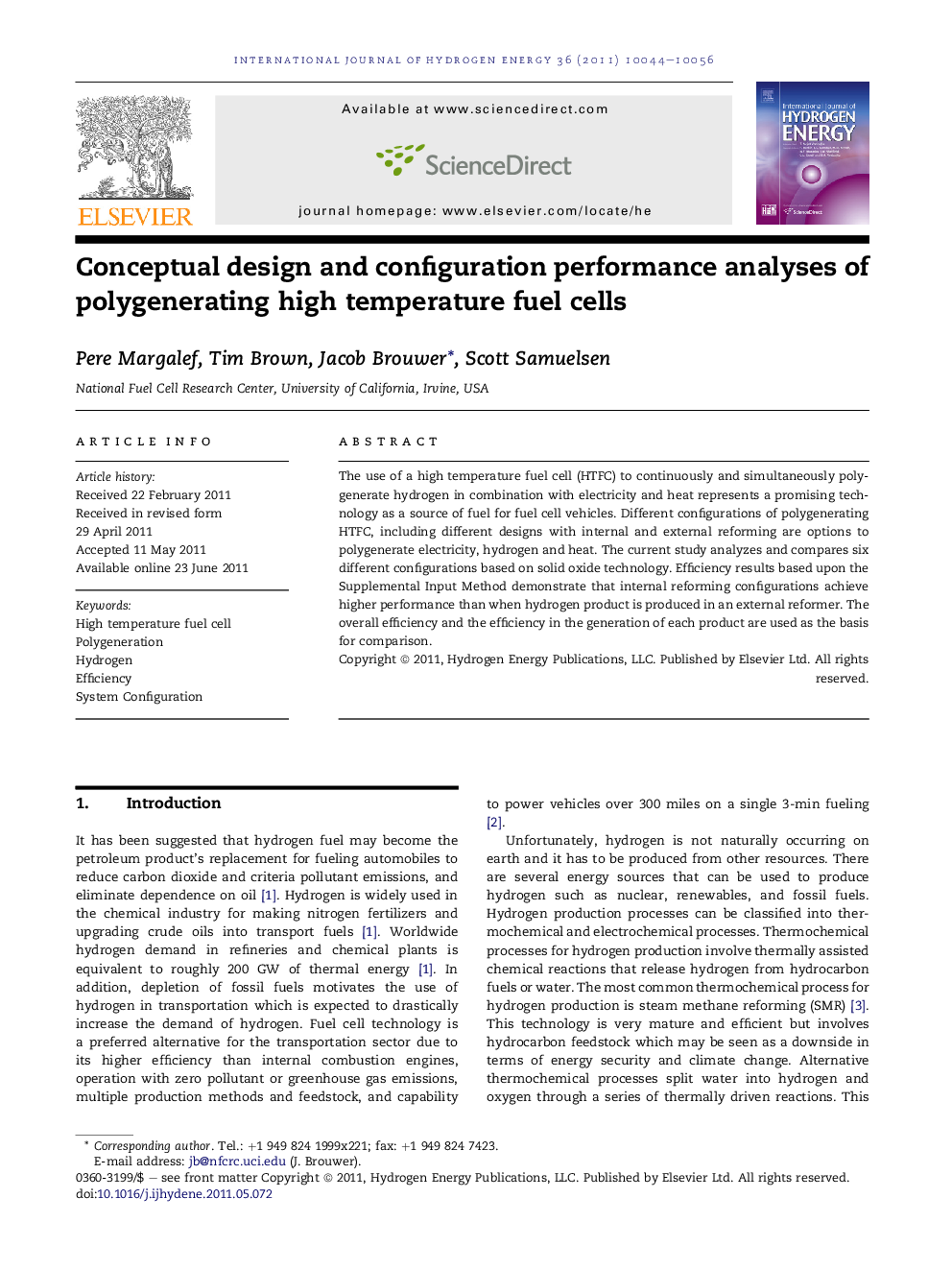| Article ID | Journal | Published Year | Pages | File Type |
|---|---|---|---|---|
| 1278947 | International Journal of Hydrogen Energy | 2011 | 13 Pages |
The use of a high temperature fuel cell (HTFC) to continuously and simultaneously polygenerate hydrogen in combination with electricity and heat represents a promising technology as a source of fuel for fuel cell vehicles. Different configurations of polygenerating HTFC, including different designs with internal and external reforming are options to polygenerate electricity, hydrogen and heat. The current study analyzes and compares six different configurations based on solid oxide technology. Efficiency results based upon the Supplemental Input Method demonstrate that internal reforming configurations achieve higher performance than when hydrogen product is produced in an external reformer. The overall efficiency and the efficiency in the generation of each product are used as the basis for comparison.
► Six polygenerating solid oxide fuel cell configurations are investigated. ► For external reformation cases, the temperature of available heat is too low to produce much H2. ► For internal reformation cases, fuel processing occurs at the right temperature to produce H2. ► Overall efficiency is higher for the internal reforming cases due to higher H2 production.
